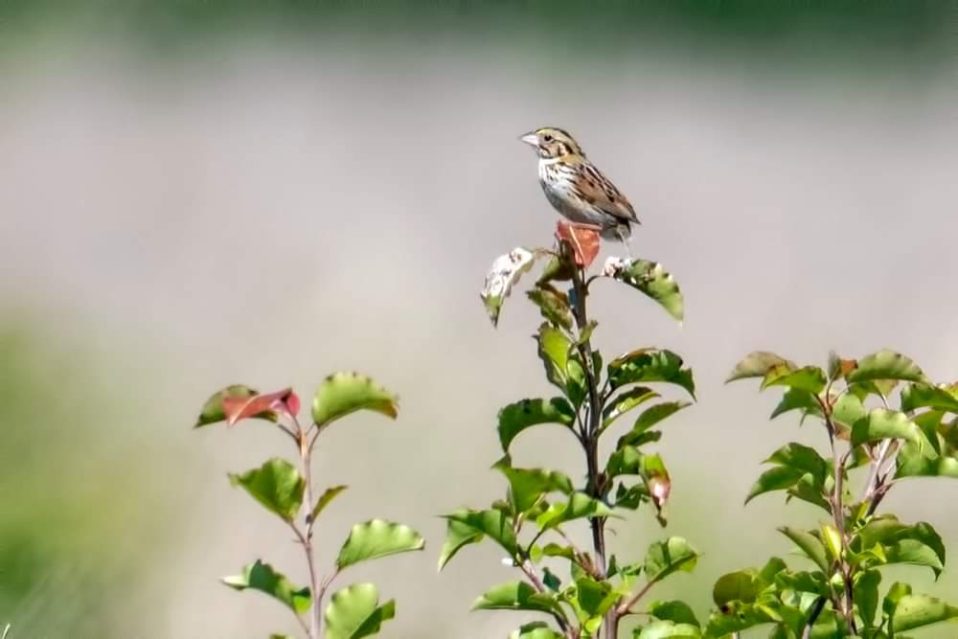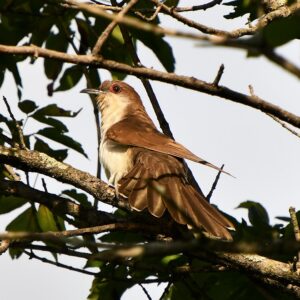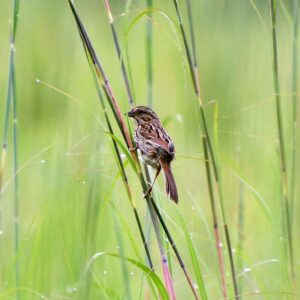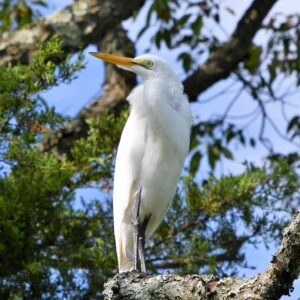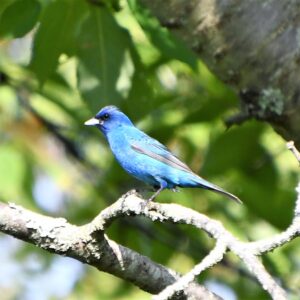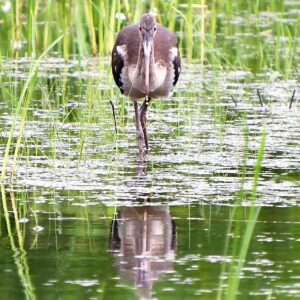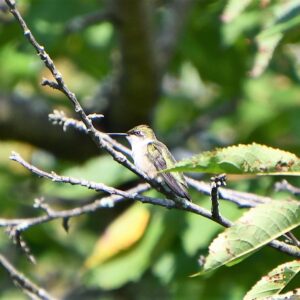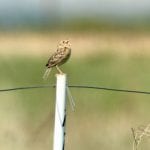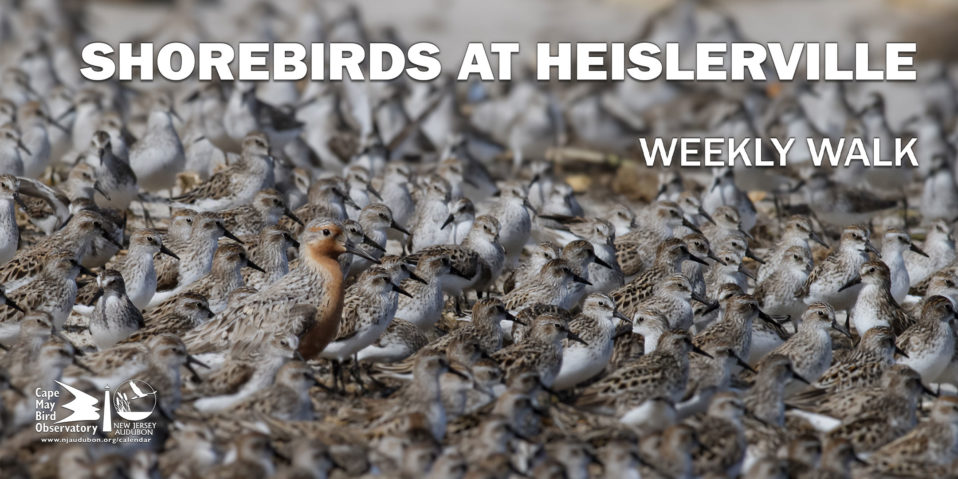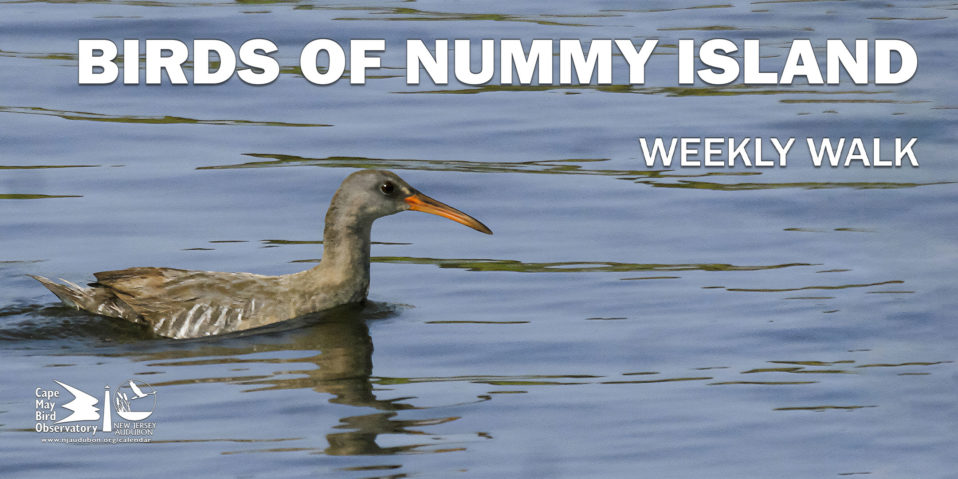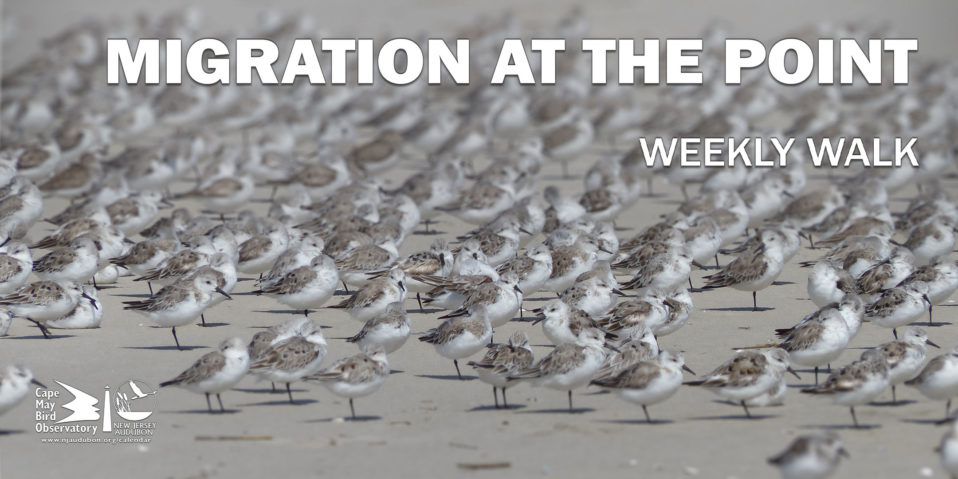This male Henslow’s Sparrow has been vociferously singing from small shrubs since its presence became known June 22, 2019. Photo by Donna Schulman.
Two miles west of busy Route 1 in Somerset County lies the Negri-Nepote Grasslands, an oasis where you can hear little mechanical noise and the sounds of breeding birds in summer. Birders have been drawn here recently to view a singing Henslow’s Sparrow-a rare visitor to our state. The species has bred before at an undisclosed location in said county, and we can only hope that this may establish a local population. The population of Henslow’s Sparrow has steadily declined over the last 50 years, largely due to habitat loss. To date, over 140 birders have made trips from around NJ and NY Metro to view this rare visitor. It’s not often that one gets the chance to see this bird in the Garden State—in most summers it breeds no closer than western Pennsylvania. Like most sparrows, this species is subtly beautiful, with complex patterns of brown and rufous, combined with a stippled white breast and olive-green neck and a big bill. What it may lack it flashy colors, it makes up in its scarcity in the east.
There’s a good reason this habitat-specific species is here. In a word, it’s stewardship. Through Franklin Township’s efforts to conserve land as open space and their long-term commitment to managing Negri-Nepote as grasslands—trees will sprout no matter what…it takes management to keep grasslands as grasslands!—and NJ Audubon’s stewardship work on-site eliminating invasive species, planting native warm season grasses and perennials, and manipulating hydrology to restore an ephemeral pond, this public park has blossomed as a model for what local towns can do.
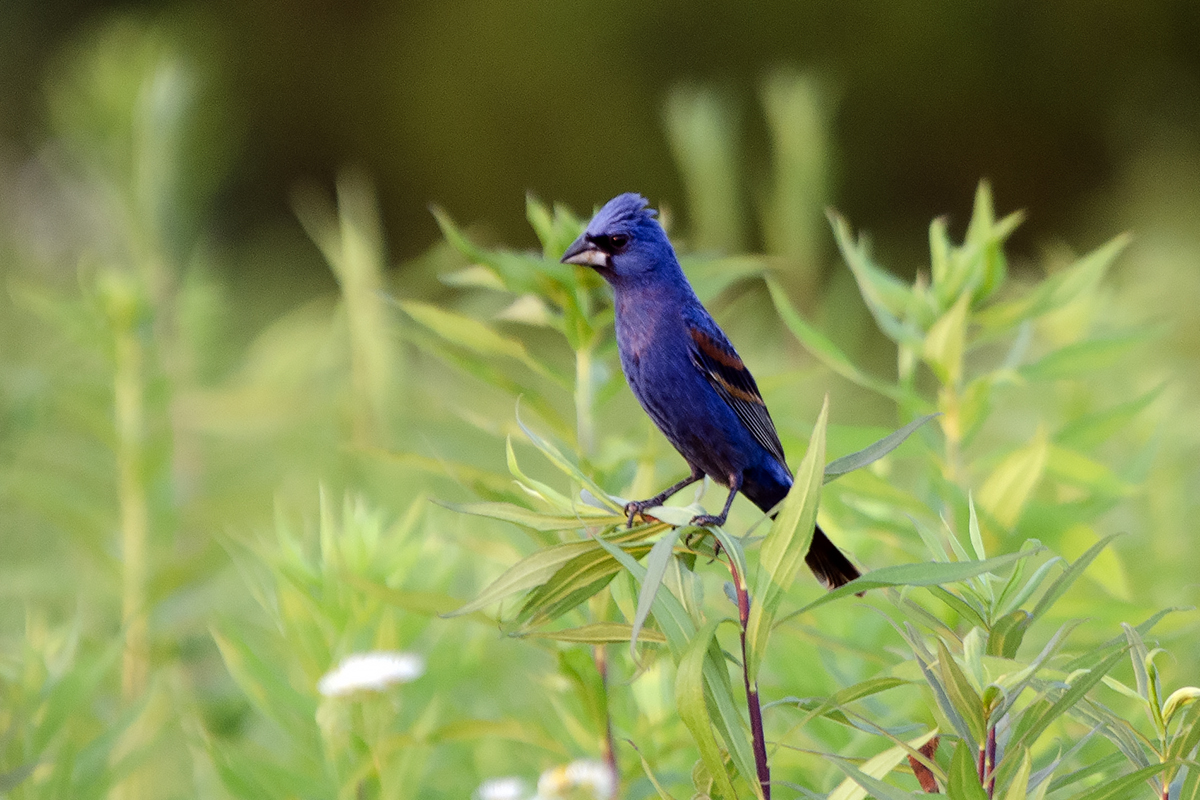
Blue Grosbeak is an annual breeder at Negri-Nepote. Listen for its complex warbling song all summer long. Photo by Donna Schulman
Work completed in 2006 when NJ Audubon and Franklin Twp restored a former 164-acre farm once filled with invasive and non-native vegetation into a vibrant natural area, with over 100 acres of native grasslands and a 2.5 acre ephemeral wetland known as Hannah’s Pond. Currently NJ Audubon and Franklin Twp are working on an updated management plan that may include the possibility of prescribed burning, which was approved by the NJ State Legislature in 2018.
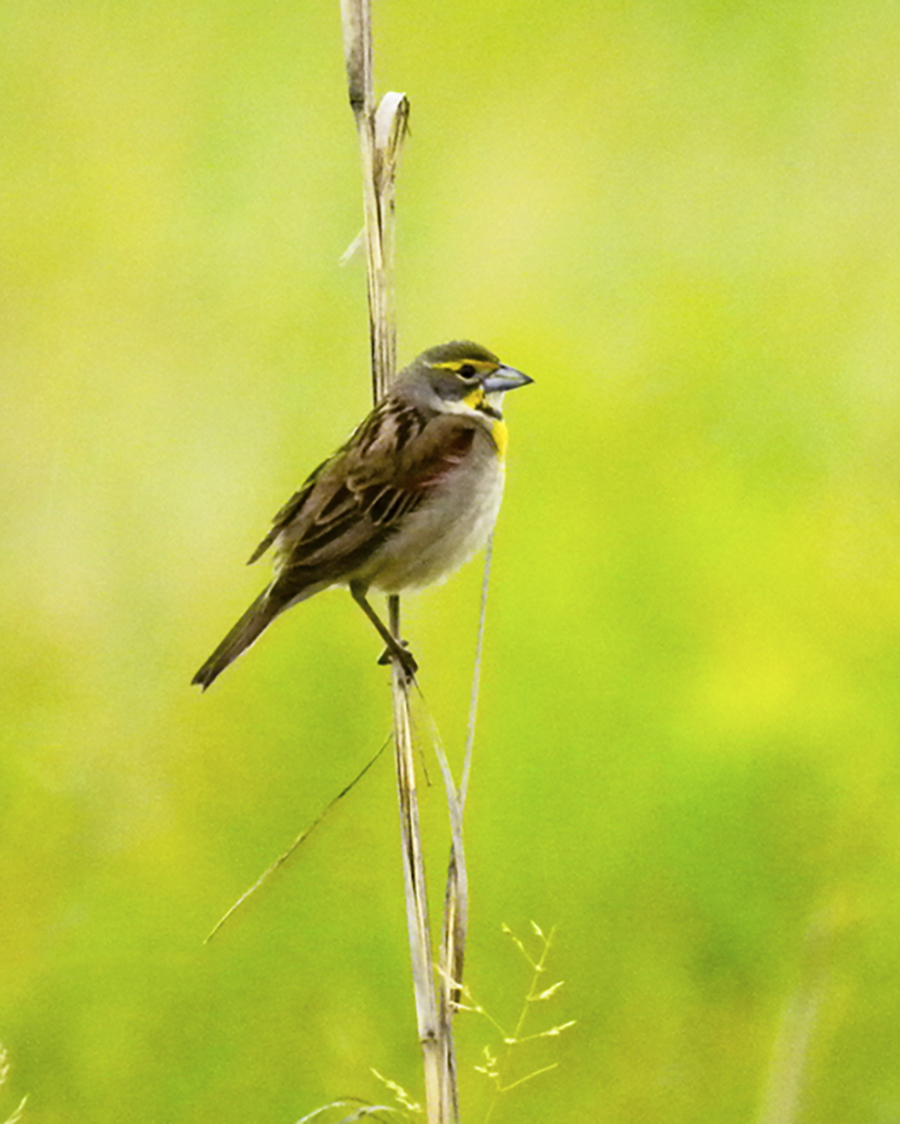
Dickcissels have bred several times at Negri-Nepote. They are more common in the Midwest. Photo by Donna Schulman
More photos of birds seen at the grasslands
We can hope that this male Henslow’s Sparrow finds a mate. Go see it while it sings. Regardless, the Negri-Nepote Grasslands are worth visiting. You may find many other birds here, including Black-billed Cuckoo, Orchard Oriole, and Grasshopper Sparrow. The site has had breeding Dickcissel several years and has hosted local rarities like American Bittern, Cattle Egret, Red-necked Phalarope (at the pond during a storm), a wintering Red-headed Woodpecker, and Vesper Sparrow. The ephemeral pond is also good for viewing a variety of dragonflies and the fields host many butterflies and other pollinators.
Banner Photo: Hannah’s Pond is an ephemeral wetland hosts many breeding dragonflies; when water levels are low some shorebirds may be present. Photo by Donna Schulman
By Scott Barnes
NJ Audubon Program Director
Go birding at Negri Nepote Grassland Preserve




